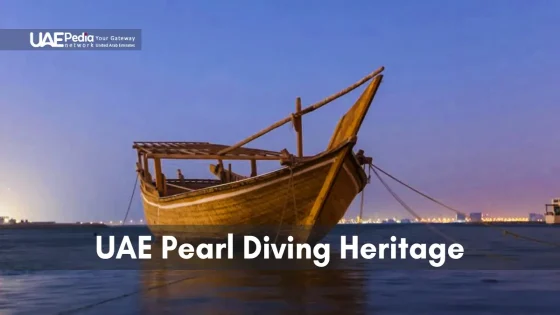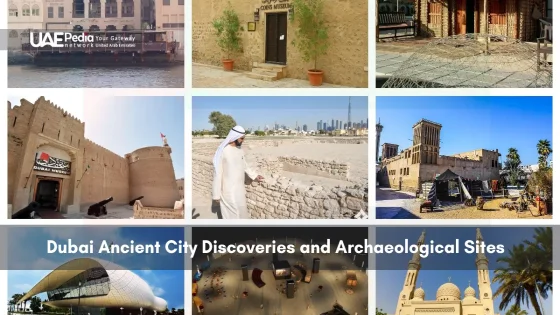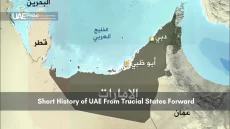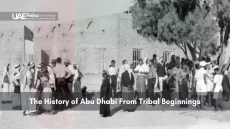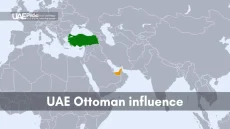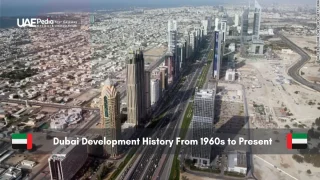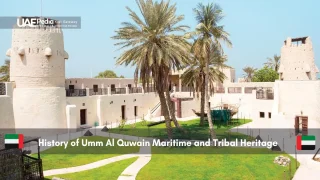What if the most revealing chapters of the UAE’s past aren’t in museums—but waiting in downloadable PDFs? Across university servers and digital libraries, scholars like Daniel Potts and Timothy Power have transformed dusty treaties and excavation reports into accessible portals revealing millennia of desert civilizations.
This guide isn’t about dry textbooks. We’re sharing how British colonial records from 1820 and Iron Age pottery analyses coexist in modern research. You’ll discover:
- Where to find 19th-century maritime agreements that reshaped Gulf trade routes
- How Andrew Marsham’s work decodes early Islamic influences on coastal settlements
- Pro tips for navigating academic databases without getting lost in jargon-sandstorms
Whether you’re a Dubai expat curious about your neighborhood’s Bedouin roots or a student dissecting Bronze Age economies, these digital treasures make the united arab emirates‘
layered identity clickable. Ready to trace how pearl divers’ contracts evolved into skyscraper blueprints?
Ancient Origins and Prehistoric Heritage
Imagine uncovering a 130,000-year-old hand-axe that rewrites the map of early human migration—right in the UAE’s backyard. At Jebel Faya, stone tools older than Europe’s famed cave art reveal how our ancestors adapted to Arabia’s shifting landscapes. These finds don’t just fill textbooks—they redraw humanity’s exit routes from Africa.
Archaeological Discoveries and Early Human Settlements
By 3200 BCE, the Hafit period’s beehive tombs dotted mountainsides—silent markers of a society trading copper and pottery with Mesopotamia. Archaeologists found carnelian beads matching those from Indus Valley cities, proving the Emirates were never isolated.
“Every artifact is a handshake across millennia,”
notes a researcher studying these networks.
What changed? Nomads began settling near freshwater sources, building stone houses at sites like Hili. Date palm cultivation emerged, anchoring communities to the land. This shift from temporary camps to villages mirrors how modern Emiratis balance tradition with urban growth.
Linking Prehistoric Cultures to Modern UAE
Today’s falconry traditions and pearl-diving festivals echo skills honed by ancient inhabitants. Even Dubai’s skyline reflects that same innovative spirit—just swap stone towers for glass ones. Want to dig deeper? This study decodes how Bronze Age trade routes shaped the region’s identity.
- Jebel Faya tools: Oldest evidence of humans in Arabia
- Hafit tombs: Architectural blueprints for collective burial practices
- Wadi Suq pottery: Proof of cross-Gulf cultural exchanges
These discoveries aren’t dusty relics—they’re threads connecting Bedouin resilience to today’s tech-driven society. Next time you sip karak chai, remember: your cup holds echoes of 5,000 years of reinvention.
Bronze and Iron Age Developments in the Region
What if the UAE’s earliest entrepreneurs weren’t in boardrooms but Bronze Age markets? Around 2600 BCE, the Umm Al Nar culture engineered circular stone tombs so precise they’ve survived 4,600 years of desert winds. These architectural marvels—some 15 meters wide—housed entire communities’ remains, revealing a society valuing collective memory as much as modern Emiratis cherish family majlis gatherings.
Umm Al Nar and Wadi Suq Cultural Advancements
Dig into Umm Al Nar sites and you’ll find Mesopotamian pottery shards alongside local copper tools. This culture didn’t just build tombs—they forged trade routes stretching to the Indus Valley. By 2000 BCE, the Wadi Suq people shifted focus. They transformed arid landscapes into farmland using groundwater channels, growing barley where only sand once blew.
Their secret? Stone-lined “qanat” systems that predate Rome’s aqueducts. A researcher at Sharjah Archaeology Museum notes:
“These weren’t just farmers—they were hydrological geniuses.”
Iron Age Innovations and Archaeological Landmarks
Jump to 1200 BCE, and the desert buzzed with metallurgists. At Saruq Al Hadid near Dubai, archaeologists uncovered 3,000-year-old snake-shaped pendants and iron spearheads. But the real game-changer? The falaj irrigation network—gravity-fed channels that turned wadis into lush oases.
| Period | Innovation | Modern Echo |
|---|---|---|
| Umm Al Nar (2600–2000 BCE) | Circular collective tombs | Sharjah’s Al Noor Island community spaces |
| Wadi Suq (2000–1300 BCE) | Underground water channels | Abu Dhabi’s Liwa oasis farms |
| Iron Age (1300–300 BCE) | Falaj irrigation systems | Dubai’s Sustainable City water management |
These weren’t isolated advances. Bronze Age merchants traded incense along routes that later became Dubai’s souq alleys. Iron Age metalworkers shaped techniques still used in Al Quoz workshops today. Every time you see a falconry glove or smell frankincense in Deira, you’re touching threads from this transformative era.
Understanding the history of uae pdf: Scholarly Resources and Documentation
Ever wondered where historians find those juicy details about 19th-century pearl divers? The answer lies in digital vaults where faded ink transforms into clickable insights. Let’s crack open three essential resource categories every researcher needs.
Curated PDFs and Key Academic Sources
Start with Daniel Potts’ “The Arabian Gulf in Antiquity” – it’s like Google Maps for ancient trade routes. Andrew Marsham’s work deciphers early Islamic legal texts found in Ras Al Khaimah. Pro tip: The Gulf Digital Archive offers free access to:
- 1820 General Maritime Treaty scans (perfect for analyzing British-Arabic bilingual clauses)
- 1930s oil exploration surveys with hand-drawn maps
- Ryan Lynch’s annotated translations of Qasr Al Muwaiji documents
Evaluating British Diplomatic Treaties and Maritime History
That 1853 Perpetual Maritime Truce PDF? It’s not just yellowed paper. As Lynch notes:
“These treaties are bilingual chessboards – every Arabic and English word was strategically placed.”
Compare them with 20th-century fishing rights agreements to spot evolving negotiation tactics. University repositories often hide gems like 1947 airmail letters between sheikhs and British agents – raw material for understanding pre-union dynamics.
| Resource Type | Scholar Highlight | Search Tip |
|---|---|---|
| Treaty scans | Potts’ coastal settlement maps | Use “filetype:pdf” in searches |
| Field reports | Marsham’s legal analyses | Check university Middle East studies departments |
| Personal correspondence | Lynch’s critical commentaries | Search National Archives UAE portal |
These documents don’t just collect dust – they’re puzzle pieces for reconstructing the arab emirates’ journey from fishing villages to global hubs. Ready to play historical detective?
Reflecting on UAE’s Historical Transformation
Time travelers need no DeLorean here—the Emirates’ past pulses through its hyper-modern present. From Jebel Faya’s ancient tools to Saruq Al Hadid’s iron workshops, each era built layers of innovation still visible today. Those Bronze Age traders bartering incense? Their spirit lives in Dubai’s gold souqs. The falaj engineers? Their water wisdom inspires sustainable cities.
Centuries of cultural exchange shaped this mosaic. Islamic legal texts, British treaties, and pearl-diving contracts all whisper in today’s legal frameworks. Even skyscrapers mirror Iron Age towers—just swap stone for glass.
Three threads bind this story:
- Adaptation: Nomads becoming farmers, then global connectors
- Exchange: Mesopotamian pottery, Indian beads, modern megaprojects
- Reinvention: Desert trails evolving into digital highways
This guide isn’t just about artifacts or PDFs. It’s your lens to see how Bedouin resilience fuels AI ambitions. Ready to trace your coffee’s path from ancient trade routes to your cup? The journey’s just beginning.
The UAE National Archives and Al Ain University’s digital libraries offer curated collections – including treaties, maps, and excavation reports – available as downloadable PDFs. For maritime records, check the British Library’s Gulf Historical Maps project.
Jebel Hafeet tombs reveal Bronze Age trade networks, while Al Sufouh’s Iron Age smelters highlight early innovation. Don’t miss the Umm Al Nar coastal settlements near Abu Dhabi, where 4,000-year-old pottery traces links to Mesopotamia and Indus Valley civilizations.
The 1820 General Maritime Treaty ended piracy disputes, opening pearl trade routes and formalizing tribal alliances. Original documents (often PDF-scanned in archives) show how Trucial States’ autonomy laid groundwork for the 1971 federation.
Yes! Zayed National Museum shares excavation summaries, while NYU Abu Dhabi’s library grants access to academic journals. For British-era records, the Qatar Digital Library hosts 500,000+ Gulf-related files – all searchable by keyword like “Trucial States” or “pearl diving”.
Look at falconry traditions from ancient Bedouin hunting practices or the enduring aflaj irrigation systems in Al Ain – both UNESCO-recognized. Even today’s majlis gatherings mirror Bronze Age community decision-making found at Hili sites.

